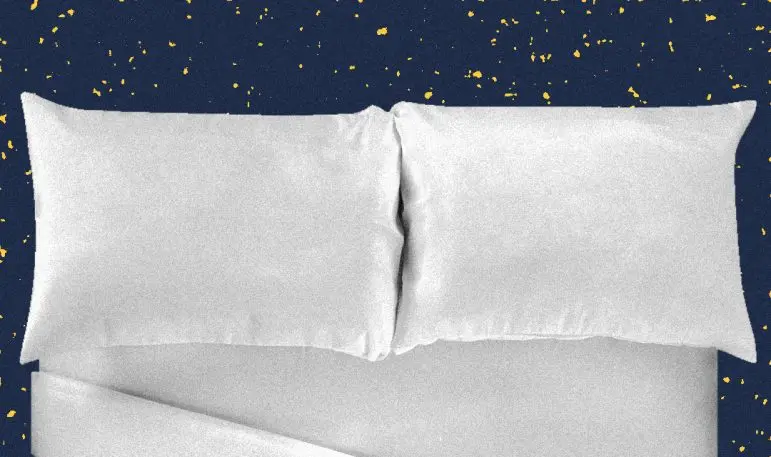Healthy sleep leads to healthy brains. Neuroscientists have gotten that message out. But parents, doctors, and educators alike have struggled to identify what to do to improve sleep. Some have called for delaying school start times or limiting screentime before bed to achieve academic, health, and even economic gains.
Still, recent estimates suggest that roughly half of adolescents in the United States are sleep-deprived. These numbers are alarming because sleep is particularly important during adolescence, a time of significant brain changes that affect learning, self-control, and emotional systems. And sleep deficits are even greater in economically disadvantaged youth compared with more affluent counterparts.
Research from my developmental neuroscience lab shows one solution to the sleep deprivation problem that is deceptively simple: provide teens with a good pillow. Because getting comfortable bedding does not involve technology, expensive interventions, or lots of time, it may be particularly beneficial for improving sleep among underresourced adolescents.

Consistency over quantity
Studies in my lab have shown that seemingly small differences in the quality and duration of sleep make a difference in how the brain processes information.
Sleep acts like a glue that helps the brain encode recently learned information into long-term knowledge. It also improves focus in school because sleep helps dampen hyperactive behavior, strong emotional reactions, and squirminess. This means that students who are normally dismissed from the classroom for disruptive behavior are more likely to stay in class if they’re not sleep-deprived. More time in the class leads to more learning.
My colleagues and I originally hypothesized that the number of hours asleep was most important for healthy brain development over time. But when we tested this idea with a study, the findings surprised us. Instead, adolescents whose sleep is inconsistent across the school week, varying by as much as 2.5 hours from one night to the next, exhibited less development of white matter connections in their brains a year later than those who slept a more consistent number of hours per night.
White matter connections help process information efficiently and quickly by connecting different brain regions, similar to how a highway connects two cities. Adolescence is an important time for paving all the brain’s highways, and this research suggests sleep may be vital for this construction.

Better sleep comes with better bedding
So what are the primary sleep ingredients that contribute to healthy brain development? My lab designed a study to investigate.
We equipped 55 14- to 18-year-old high school students across Los Angeles from different socioeconomic backgrounds with actigraphs, wristwatch-like monitors that track sleep quality. Higher sleep quality is defined by fewer awakenings per night. Those are times in the night when sleep rhythms are disrupted and the person is briefly awake or moves into a lighter stage of sleep, whether they’re consciously aware of it or not. In our study, adolescents had an average of five awakenings per night that ranged in duration between less than a minute and over an hour.
After two weeks, they came into the lab to have their brains scanned. We were interested in measuring the connections among pathways in the brain involved in self-control, emotion, and reward processing–the same ones that are important for reducing impulsivity and staying focused in class. Unsurprisingly, adolescents with better sleep quality had better “brain connectivity.” That is, connections among key brain regions were stronger.
But the more important, and surprising, discovery was what we found when we dug deeper into identifying the reasons some adolescents got better sleep than others. Was it less technology in the bedroom? Darker rooms? Less noise? Higher socioeconomic status? Not in our study.
Adolescents who reported greater satisfaction with their bedding and pillows were the ones who had greater sleep quality, and greater sleep quality was associated with greater brain connectivity, an effect that cut across socioeconomic lines. Conversely, adolescents in our study with low brain connectivity and poor sleep quality exhibited greater impulsivity than those with high connectivity and sleep quality, illustrating the real-world effects on behavior.
So is there a perfect pillow? We found that one size doesn’t fit all. For some people, a flat pancake pillow soothes them into a sound slumber. For others, only a super-puffy cloud will do. And although our findings were strongest for pillow comfort, bedding more generally was important too.

Sleep interventions to close achievement gap
In every measurable domain, young people reared in poverty experience poor outcomes. Compared to more affluent peers, they show poorer academic and cognitive performance, psychosocial well-being, and physical health. These gaps have been the focus of intense debate and research, but they remain wide and persistent.
The availability and quality of basic needs, including food, health, parental warmth, and shelter, helps explain some of the discrepant outcomes between high- and low-income adolescents. But researchers have sorely underemphasized sleep–an equally important basic need that may be an untapped solution to the achievement gap.
Reducing the achievement gap is the goal of many government-funded programs. One way to achieve it is to create accessible and realistic targets for intervention that improve day-to-day functioning. Sleep may be one such target. It is relatively easy to quantify and track, affected by daily habits that can be changed such as parental monitoring and bedtime routines, and it is directly associated with learning, social, and health outcomes.
In a time of borderline hysteria over the effects of technology on sleep and brain development, little attention goes to the fundamental elements of good sleep in adolescents. Ensuring they have comfortable bedding may help improve sleep in all adolescents, particularly among poorer families. And it’s a lot easier to convince parents and teens to invest in pillows than to bicker over phone privileges.
Adriana Galván is a professor of psychology at the University of California, Los Angeles. This post originally appeared on The Conversation.
Recognize your brand’s excellence by applying to this year’s Brands That Matter Awards before the early-rate deadline, May 3.